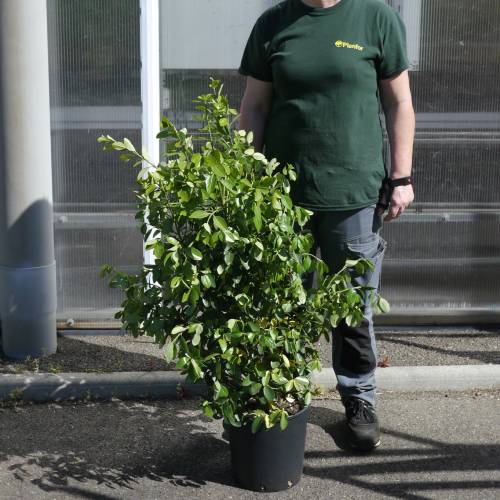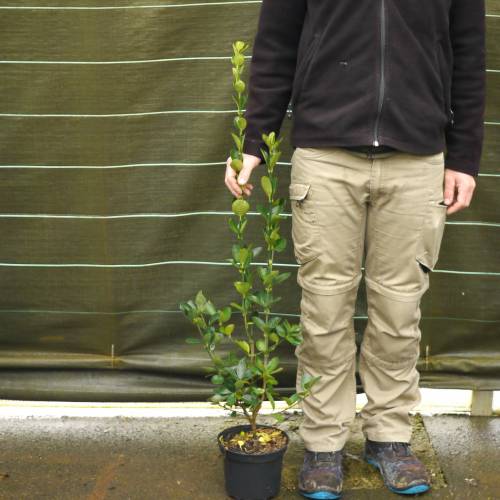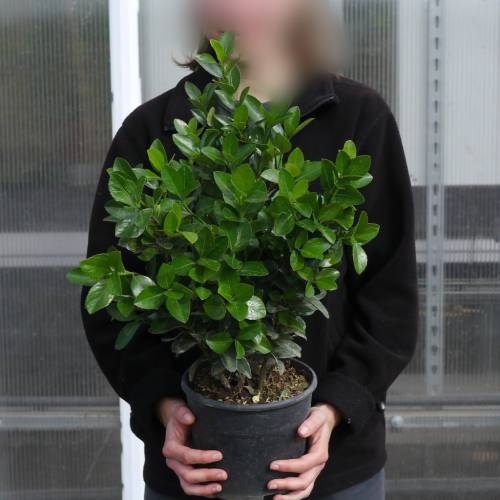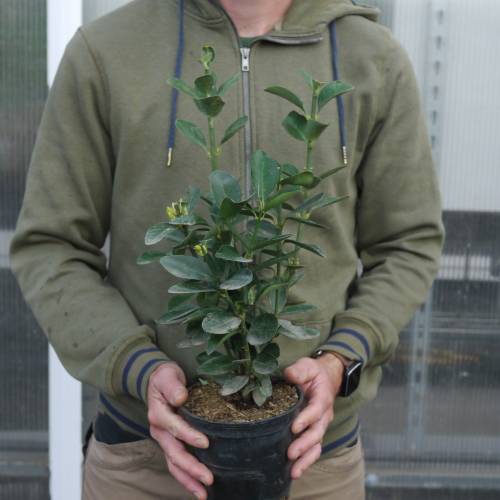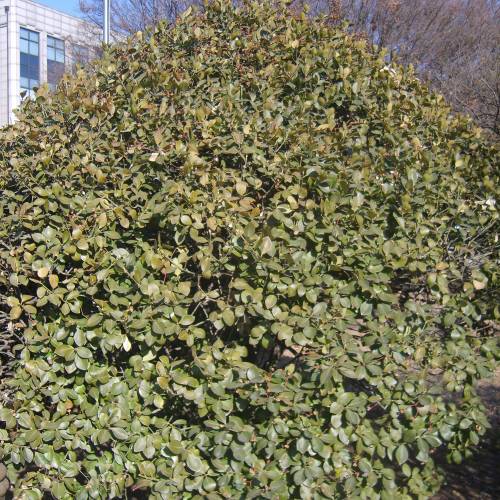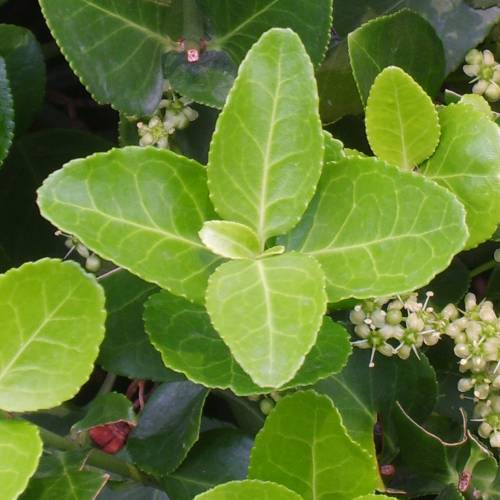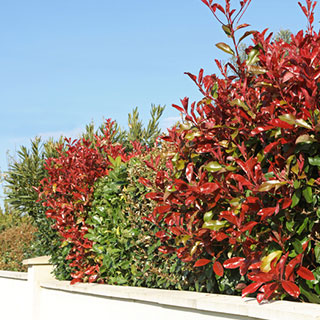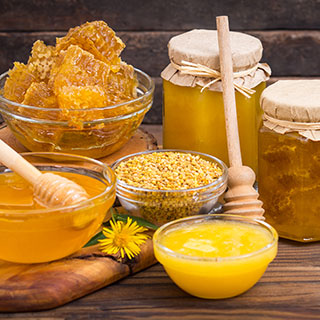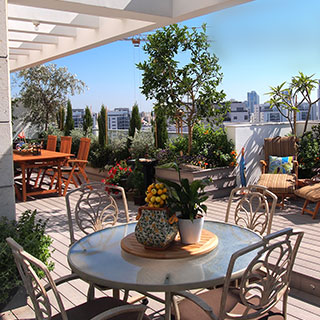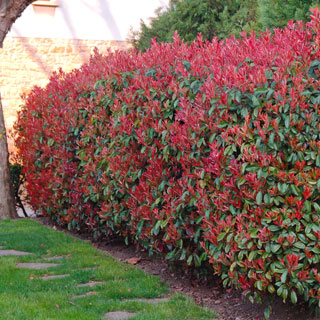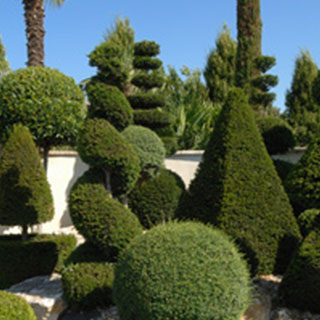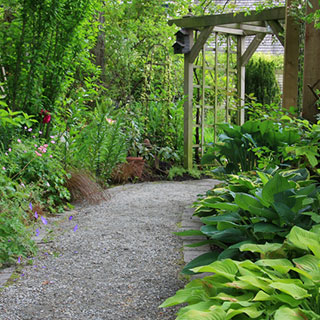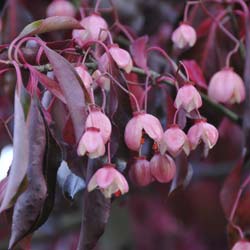
Spindle Tree, Japanese / Euonymus japonicus
-
4.94 € Japanese Spindle Tree (Euonymus japonicus)
8403O - Available
-
4.42 € Japanese Spindle Tree (Euonymus japonicus)
8403P - Available
-
3.90 € Japanese Spindle Tree (Euonymus japonicus)
8403Q - Available
-
3.38 € Japanese Spindle Tree (Euonymus japonicus)
8403R - Available
-
2.86 € Japanese Spindle Tree (Euonymus japonicus)
8403S - Available
-
0.40 € FERTILISER
8403A - Available
-
Area of origin: Japan
Adult dimensions: Height up to 3.50m, width up to 2.50m
Foliage: Evergreen
Soil type: Any type, tolerates lime
Hardiness: Hardy to -15°C
Exposure: Part shade
Properties and uses:
Japanese Spindle, or Evergreen Spindle, is a bushy evergreen shrub with dark green leaves.
Once adult, it is taller than the Japanese Spindle ‘Green Spire’, which makes it the perfect candidate for average-height evergreen hedge projects. It also tolerates pruning.
Japanese Spindle adapts to any situations, tolerates lime, drought, sea-spray, and pollution!
• See the Spindle Trees cataloguePlanting a Hedge of Japanese Spindle
1/ To create a hedge of Japanese Spindle, you may choose seedlings with different heights depending on the desired effect and the allotted budget.
- Seedlings less than 40 cm high in individual cups or clods, will grow in your garden according to the resources available. As does the nurseryman, you will have to pay attention to their growth and adapt watering, addition of fertilizer, and pruning. They are often the cheapest solution, due to their small size. On the other hand, you will have to wait a few years before the hedge reaches its full capacity
- Seedlings more than 40 cm high in pots, will be more developed and have more branches. You will have to keep a close eye on their growth at least during the year following the plantation. They will quickly create a hedge if they are correctly pruned in order to encourage branching
2/ Whatever your choice is, always plant after preparing and enriching the soil.
Drought periods are often synonym of water stress, so the gardener must remain vigilant and add a manual or automatic watering system.
Natural or plastic mulching is also highly recommended to limit the growth and competition of grass weeds.3/ To create a screening hedge:
- Plant every 60 to 80 cm.
- Spread mulching on a clean soil.
- Cut the tip of the stems to encourage branching. This way, you will have a denser hedge.
Pruning and maintenance of a Hedge of Japanese Spindle
Hedges are clean and beautiful when they are pruned regularly. Regular pruning and shaping can influence the growth rate and density of the hedge.
There is a distinction between an adult hedge and a forming hedge. The adult hedge needs maintenance pruning. A forming hedge needs pruning and shaping to encourage healthy growth and the development of side branches while avoiding bare trunks at the base of the shrub.Pruning and shaping of regular hedges:
Roughly cut the sides of the hedge to a same size during the first years after plantation. The base must be slightly larger than the top, so that all the branches take advantage of the sun. Remove 30 to 40% of the year's growth until the hedge has the required height and width. Prune the top only when the shrub has reached the desired height. In the meantime, cut only the side branches.
In a few years' time, your hedge will be fully grown and will only need yearly maintenance pruning to keep it beautiful.When is time to prune the hedge ?
The best moment to prune a flowering hedge is right after blooming.
The best moment to prune regular or screening hedges depends on the variety of shrub that composes it.
For a deciduous tree, prune in spring (April) then at the end of September.
For a conifer, prune in June to enjoy the spring shoots. Do not prune after September, as the cuts would not heal well.

